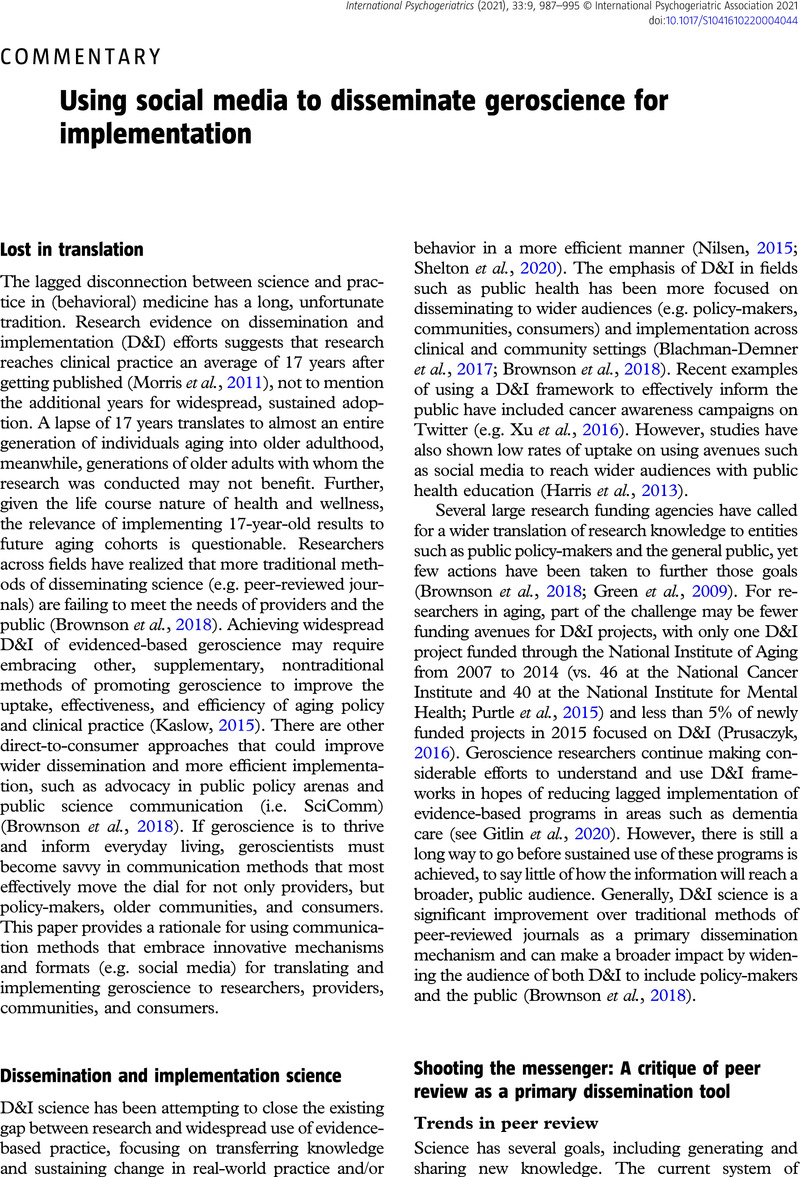Crossref Citations
This article has been cited by the following publications. This list is generated based on data provided by Crossref.
Pachana, Nancy A.
2021.
Using implementation science to progress psychogeriatrics.
International Psychogeriatrics,
Vol. 33,
Issue. 9,
p.
847.
Irwansyah, Irwansyah
2022.
Communication Ecology Model of Successful Aging in Indonesian Context.
Geriatrics,
Vol. 8,
Issue. 1,
p.
3.
O'Connor, Claire M. C.
Poulos, Roslyn G.
Heldon, Michelle
Preti, Costanza
Beattie, Elizabeth
and
Poulos, Christopher J.
2024.
Implementation of an Arts at Home program for people living with dementia: Learnings from key stakeholders.
Health Promotion Journal of Australia,
Stasiulis, Elaine
Naglie, Gary
Sanford, Sarah
Belchior, Patricia
Crizzle, Alexander
Gélinas, Isabelle
Mazer, Barbara
Moorhouse, Paige
Myers, Anita
Porter, Michelle M.
Vrkljan, Brenda
and
Rapoport, Mark J.
2024.
Developing the Driving and Dementia Roadmap: a knowledge-to-action process.
International Psychogeriatrics,
Vol. 36,
Issue. 12,
p.
1157.



